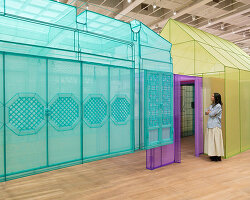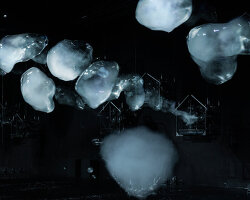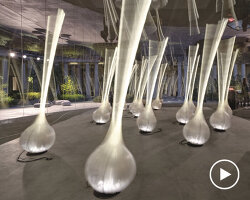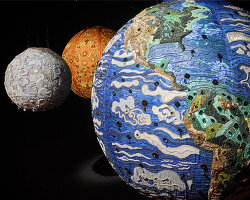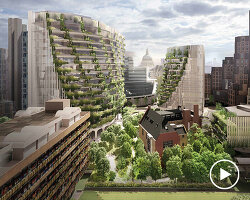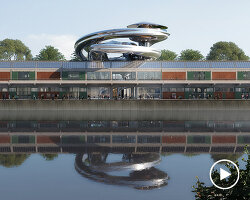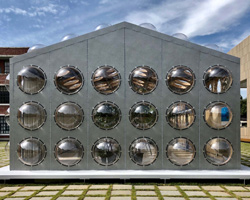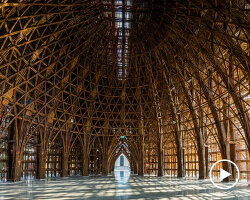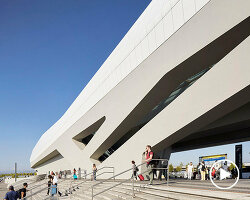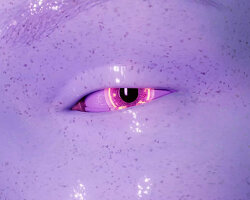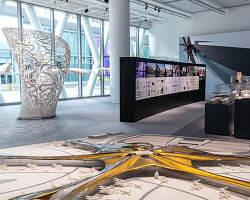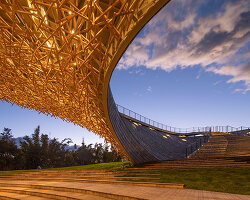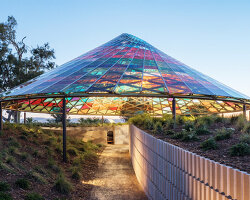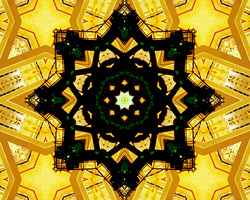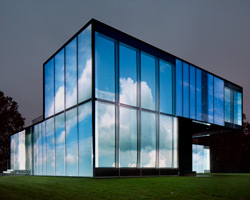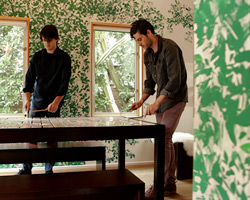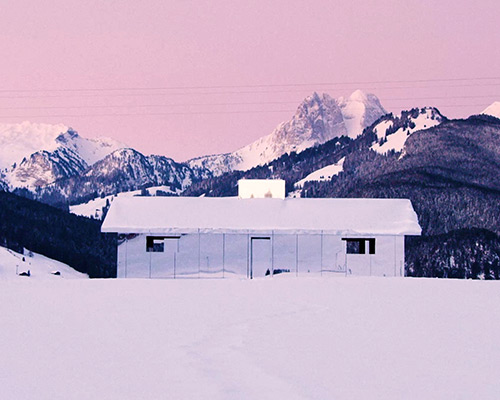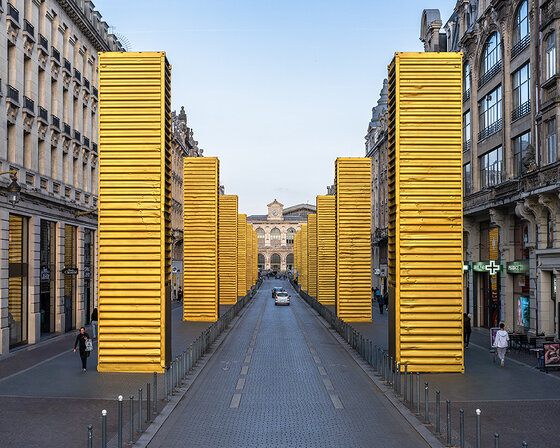presenting a new ecosystem of interconnected mediums, doug aitken continues his trans-disciplinary work with ‘flags and debris.’ the collection, showing at los angeles art gallery regen projects, makes up the artist’s newest body of explorations developed during the last 10 months. while his work has ranged from mirror-clad architecture and hot air balloons to underwater pavilions, the 2020 COVID lockdown called aitken to look to inward to the confines of his own home and city — works of handmade fabric wall hangings transform clothes and materials in his closet while hallucinatory, choreographed film installations exhibit the mysterious and unusual moments of solitude in LA.
‘flags and debris’ film excerpt courtesy of @dougaitkenworkshop
doug aitken‘s ‘flags and debris’ at regen projects introduces a film which hybridizes the graphic textile works with choreographed performances throughout a desolate los angeles. working with LA dance project, the artist wraps dancers in the artworks as they move through empty industrial spaces. the movements are unique to each setting, activating the spaces with kinetic energy. meanwhile, the fabric wall hangings are expressed as layers of fabric collaged to generate visual and written abstractions, inviting self-reflection on the nature of reality and visions of the future — fragmented phrases like ‘noise,’ ‘digital detox,’ ‘data mining’ appear like handcrafted digital glitches.
designboom speaks with doug aitken, exploring his expanding relationship with new mediums, and learning how his processes have transformed after the events of the last year.
‘flags and debris’ film excerpt courtesy of @dougaitkenworkshop
designboom (DB): you’re presenting to us a dance performance on film together with graphic textiles. can you speak about your trans-disciplinary approach with ‘flags and debris?’
doug aitken (DA): I think that I have always been very fluid with my use of medium. when COVID started I found myself in the situation, like everyone, where you’re at home or you’re in your neighborhood and that’s it and the door is shut. and I thought that maybe this is a really interesting moment to create a different challenge. maybe I should try to work with whatever is immediately around me. so I started just pulling out fabrics, materials, clothes — things like that — and cutting them up and turning them into these montages. that’s really kind of how this body of work started.
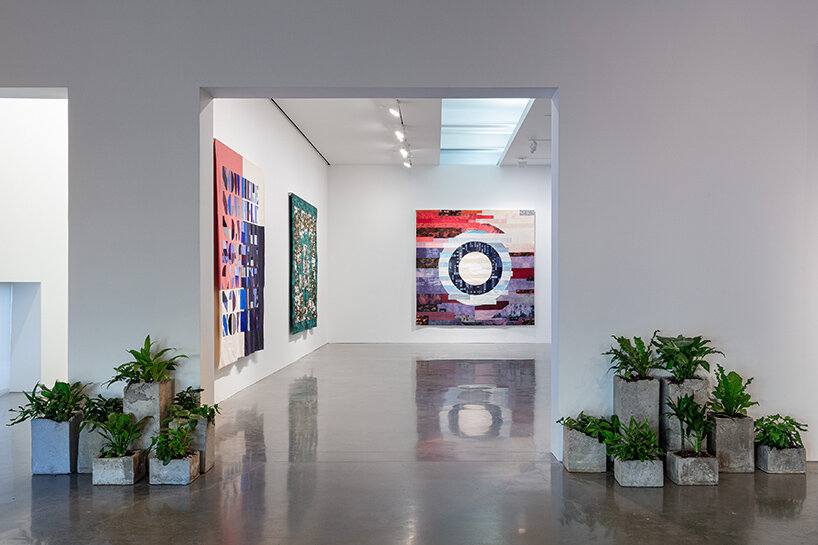
installation images by evan bedford, courtesy of the artist and regen projects, los angeles
DA (continued): I was interested in language, words and phrases, and very contemporary ideas of data mining or reality fracking — these kind of phrases are sort of esoteric and they’re very much of the present. so I would use that language and we would sew it and patch it together and make these material works. it was it was very interesting! it was a very fascinating process because so much chaos has been happening recently that you find yourself suddenly slowing down and being able to really think about the meaning of things. think about where you’re at and where society is moving towards.

DB: is this the first time that you’ve worked with textiles like this?
DA: it is absolutely, yeah. I literally began by going through my closet, pulling out shirts. it’s interesting because I think the tendency of society is to accelerate and now we’re suddenly in this moment where it’s about deceleration. it’s about stillness and reflection. and we should also embrace those qualities and find a way to work with them. so I was making those pieces and they kind of grew into a body of work that became almost like flags or banners, but they also became something that you could wrap yourself in. they became like protection or shelter. so I started thinking about this idea that there is this moment of radical uncertainty and these pieces are asking questions and I thought: maybe there’s a way that someone could wear this. maybe there should be a body inside these. and that would be the next step.
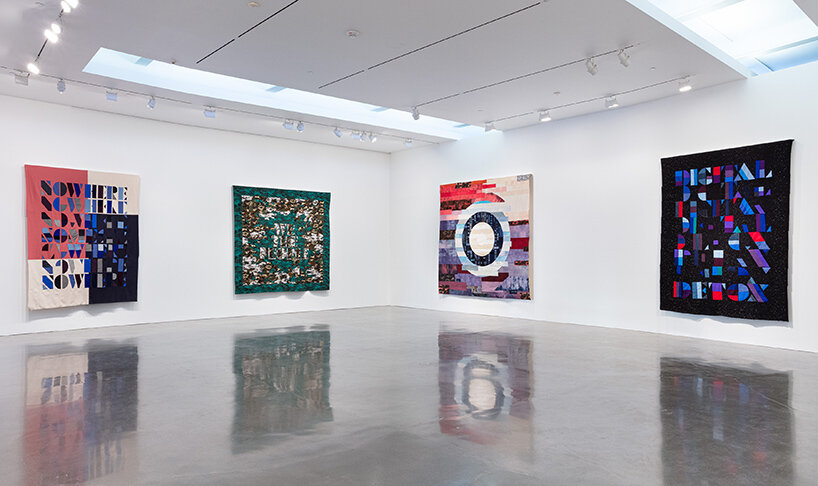
DA: so I thought about it and I reached out to los angeles dance project. I didn’t really have an exact idea of what I wanted to do but I really wanted to test out some ideas and they were willing. so we started rehearsing in a parking lot in downtown every day for about 20 days and creating a language of choreography, a language of body movement. I started to develop this piece of my mind and then that became what we started filming. so after that we went out into the city — and the city was this huge, empty concrete canvas. nobody was around, all the spaces were deserted. so all of a sudden from an architectural perspective we had this whole city in front of us that we could activate. it was completely surreal.
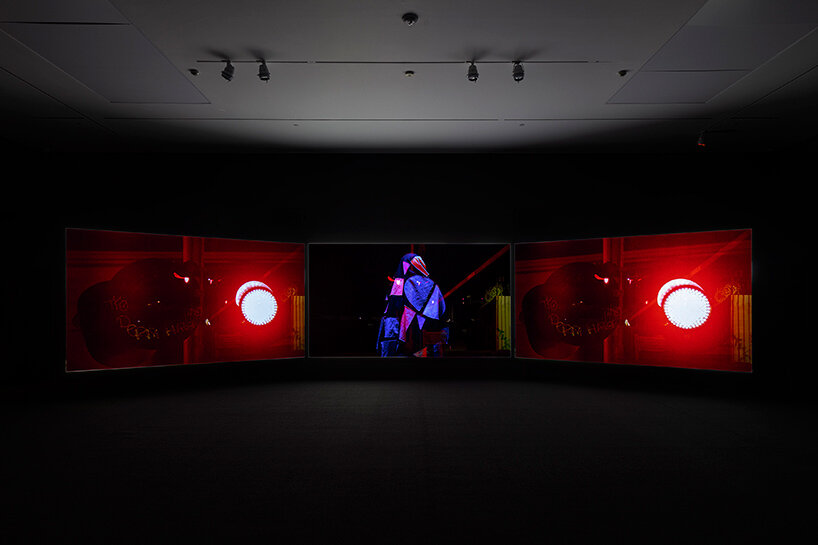
DB: the city looked completely desolate, it seems like you took advantage of a rare chance.
DA: yeah, and to be able to just go out and there’s nobody. there’s no restraint, there’s no security or police. there’s no one stopping you from doing anything. and we just took five people down to this concrete river basin to film and just improvise. and you do it, and then you do something else, and something else again. and that’s I think how the film was very processed-based. it gradually created its own story.
DB: in the ‘flags and debris’ film it seems that there is an implied form beneath the cloak, but at the same time it seems to be floating.
DA: yeah, I didn’t want ‘flags and debris’ to be restrained by the human face, by gender, by race. I wanted it to be a bit more open-ended. I wanted it to be about ‘us’ as a society and how we’re occupying space, how we’re living on the margins — how there are these neglected sectors of our cities, which we don’t really recognize.
DB: so you have presented this cloaked form in contrast with the exposed body — slow moving surfaces together with anxiously moving hands — what is the intention behind that?
DA: I wanted to go through a spectrum from violence and restraint to release. I think at the end of the work it reaches this point where it just lets go and in a way there’s a sense of liberation.

DB: what can be uniquely communicated through the medium of dance? you noted that you’d developed a language of choreography — what are you communicating through this language?
DA: I was really focusing on patterns and repetition, I wanted these motifs that can be repeated and repeated. because I knew that we were creating it for film as opposed to a live dance piece with an audience. that was also very interesting because I think that in this moment that we’re in right now, images have a different value. images are all we have — a clip of moving image, a still photograph — that’s how you and I can share. can’t we can’t meet inside a museum and look at something in the flesh. so I was really aware of that and I felt like, fuck it — we should just use this time and really make this film, make this installation. it should be uncompromising and we should make it now against all obstacles.
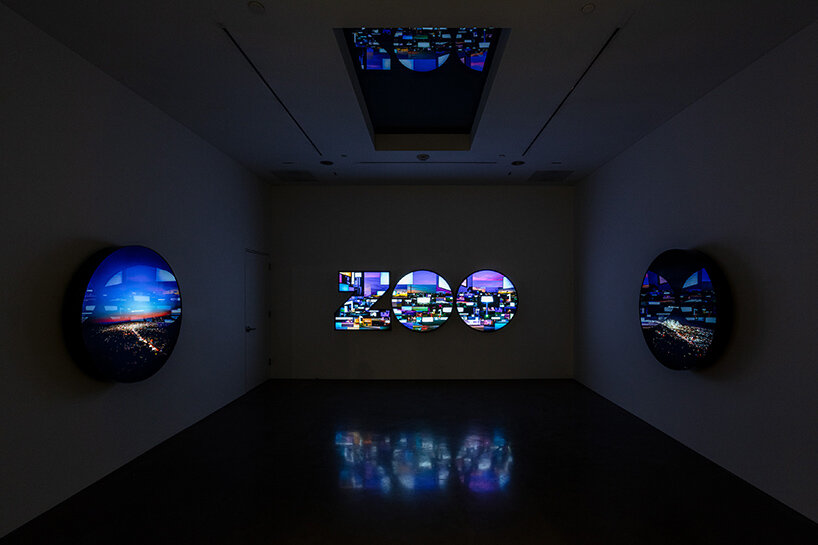
DB: your design process has certainly changed since last year — how is it different than it was five years ago?
DA: I think that it’s interesting we’re at in culture and creativity. we’re moving into a phase where defining oneself by medium is less and less important. I think it’s more important to define yourself by your ideas and your vision. I think that as we come out of this period of time we’ll probably see more of that. we’ll probably see more people who are working on more platforms simultaneously with more mediums. to me that’s very interesting because it’s very liberating. we shouldn’t be styling ourselves or defining ourselves by what we do and how we make. the other thing I think that’s going to come out of this — when the pandemic lifts — is that we’re going to choose which things we want to go back to and which things we want to move past. I think culture has been very rigid, very stiff, for a very long time. it’s been kind of stuck in its ways and I think this is an opportunity right now for all of us to really redefine that and to look towards what we think works, what’s really inspiring, and we can leave the rest behind.
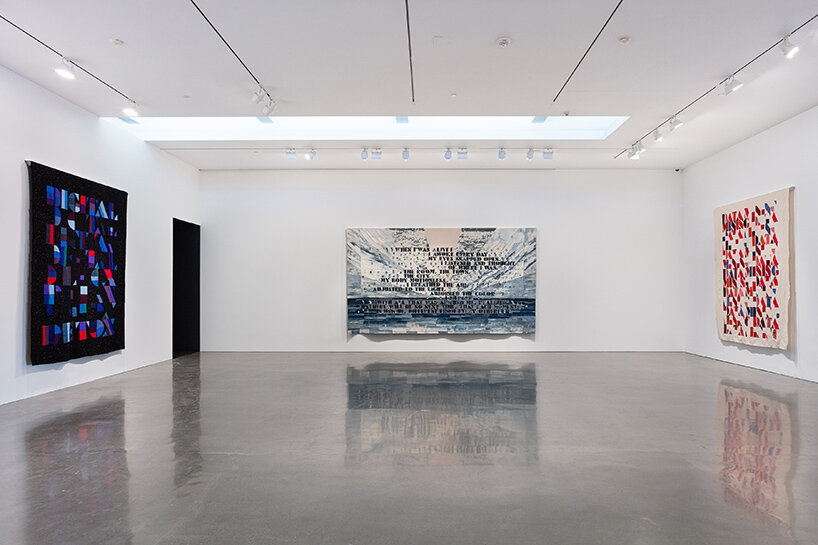
DB: I wonder — and maybe you don’t know the answer — if you’ll continue exploring with textiles?
DA: I really, really enjoyed this and you know, I can see it! I could see it going forward in two different directions. so yeah, I’m totally open to it.
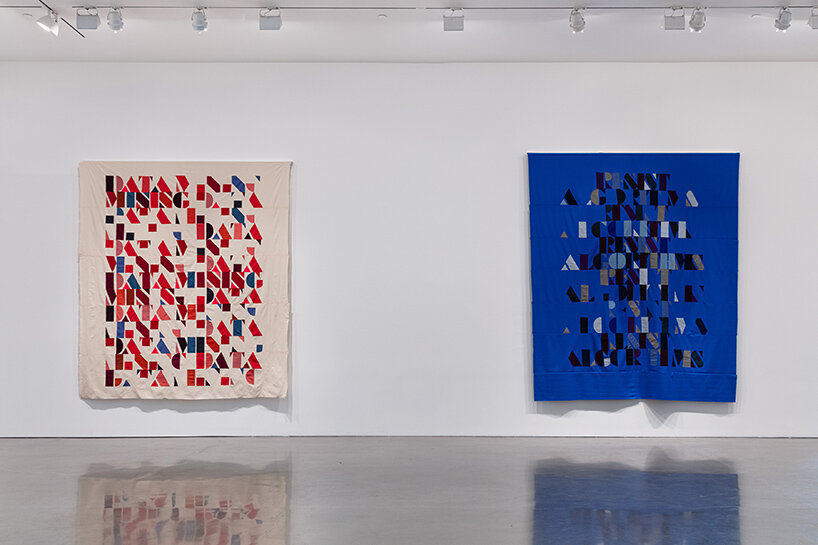
DB: what’s the difference in mindset when you work with these mirror-clad works of architecture out in the mountains? what drove you to go in that direction versus this new medium?
DA: I think my work is like a tree with many branches and limbs. you know, from film installations to experimental architecture, to happenings. and I think that the piece was like ‘mirage’ that you mentioned. that idea of creating these reflective spaces is kaleidoscopic spaces came out of the moving image. I thought, what if you could make a film but the viewer was the subject of the film? the viewer was always alive and always fragmented and always moving and changing as they were encountering it. I think that ‘flags and debris’ has a similarity to that in the sense that this body of work is about mapping the urban space. this is about mapping the modern city, sewing together pieces of experience in fragments of words and phrases and impressions and putting them all together. if you look at a city from above it is kind of like a huge quilt. I took that approach in a time of violence and uncertainty and unrest. in an intuitive way it felt like the right medium to use, it felt like the right direction. it felt like a way of creating some kind of internal order for this chaotic outside world.
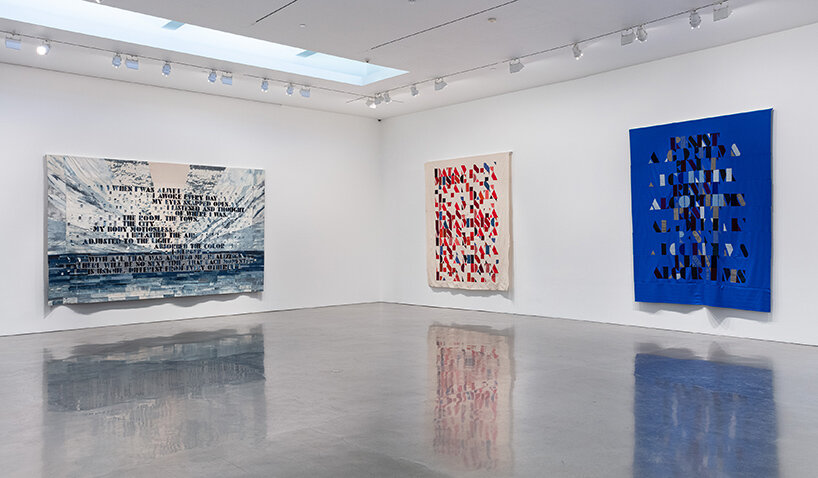
DB: what were you reading, watching, or listening to while you were working on this series? it’s curious to see a glimpse into the process and what drove your work.
DA: I think there’s just so much going on, you’re listening to so much, you’re watching so much. it’s almost like what you create is this distillation of that. the quantity that we absorb now is so great that to make something is almost to reduce it or distill it into something finite. I think in a lot of ways, a lot of the art we see being made right now is that. it it exists in relation to this dense world of information and I think it’s in pursuit of finding a voice in that.
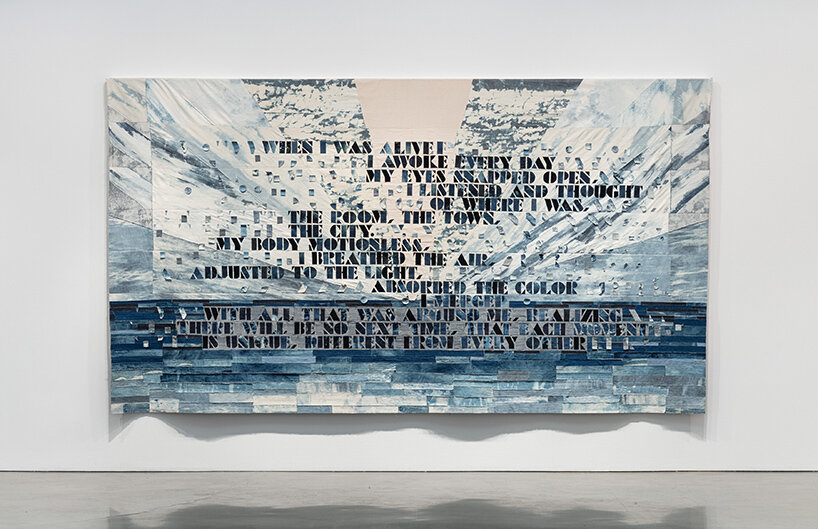
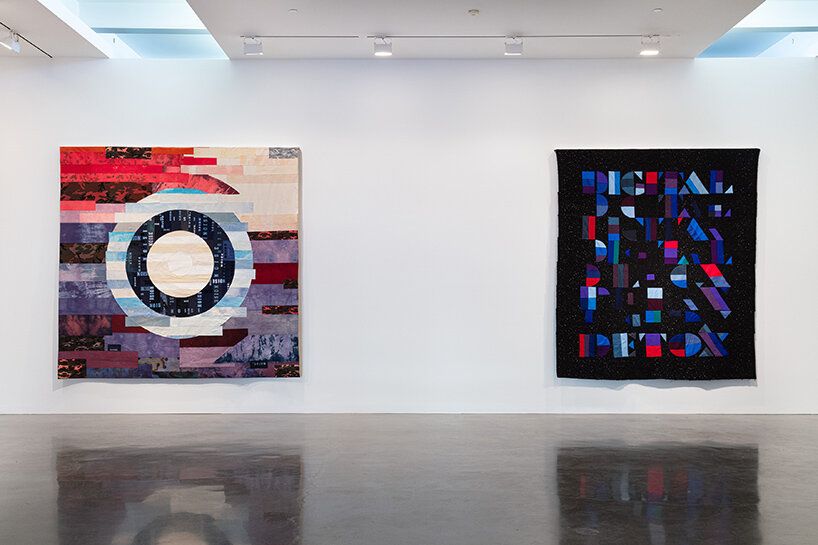
project info:
project title: flags and debris
artist: doug aitken | @dougaitkenworkshop
gallery: regen projects | @regenprojects
dates: january 16th — march 13th, 2021 (by appointment)
collaborators: LA dance project | @ladanceproject (anthony lee bryant, david adrian freeland, jr., mario gonzalez, vinicius silva, nayomi van brunt)
photography: evan bedford
happening now! with sensiterre, florim and matteo thun explore the architectural potential of one of the oldest materials—clay—through a refined and tactile language.


